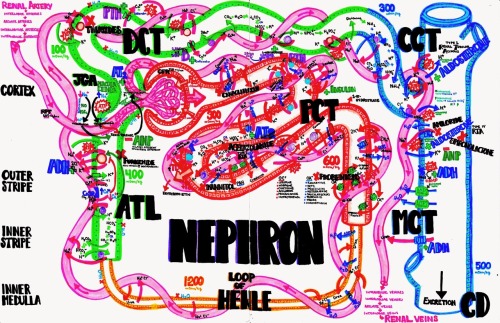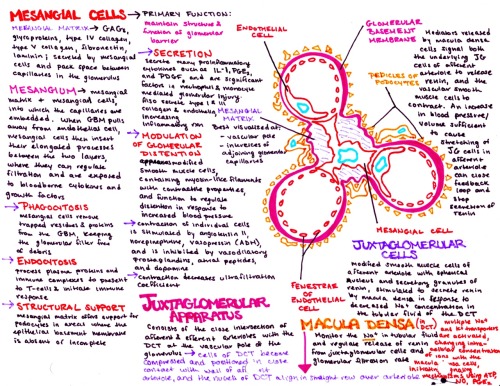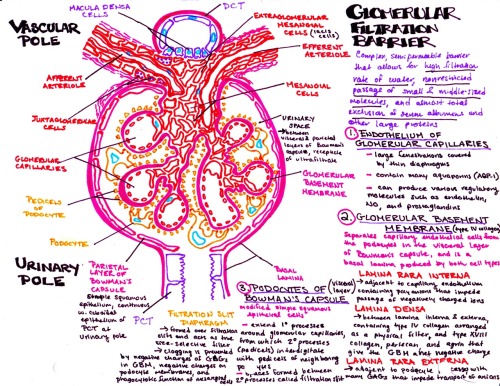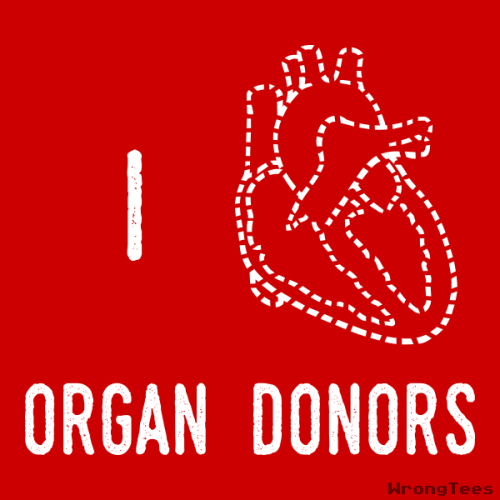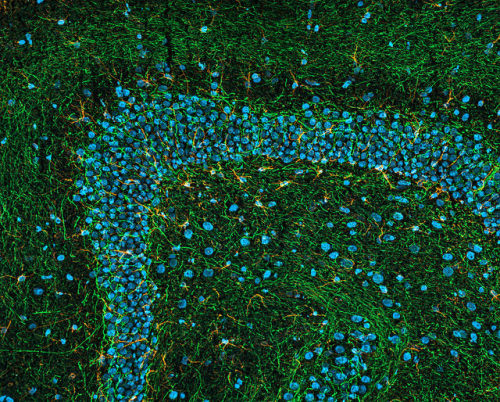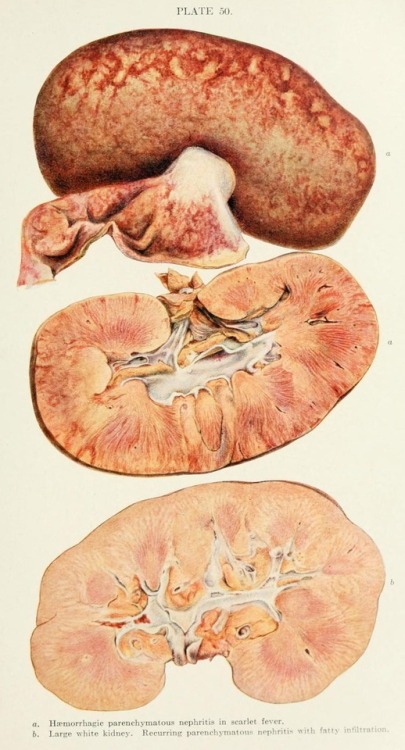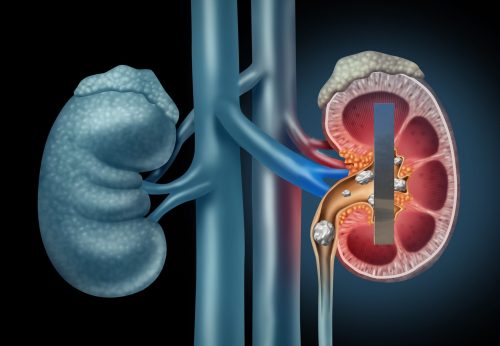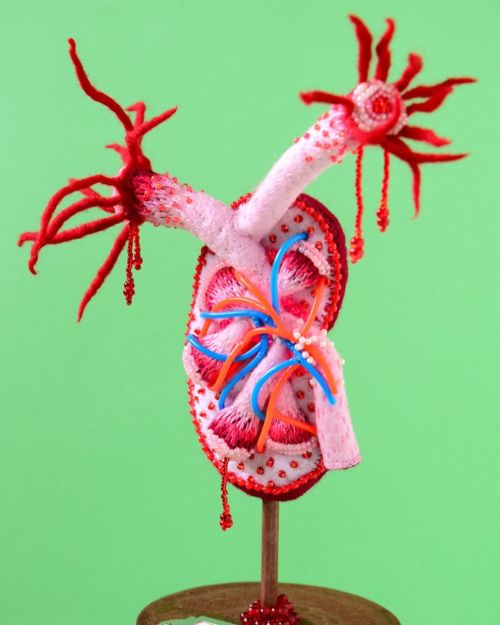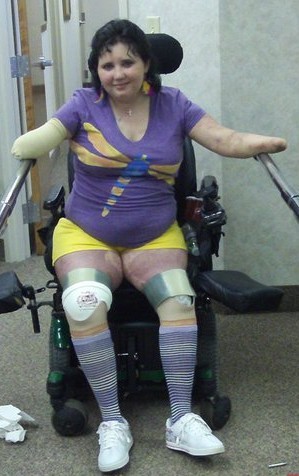#kidney
10 Badass Teachers Who Should Get Paid More Than Any CEO
Horseshoe kidney with ureters and bladder. / Riñón en herradura con ureteres y vejiga.
The horseshoe kidney is the most common type of renal fusion anomaly. It consists of two distinct functioning kidneys on each side of the midline, connected at the lower poles by an isthmus of functioning renal parenchyma or fibrous tissue that crosses the midline of the body. //// El riñón en herradura es el tipo más común de anomalía de fusión renal. Consiste en dos riñones funcionales distintos a cada lado de la línea media, conectados en los polos inferiores por un istmo de parénquima renal funcional o tejido fibroso que cruza la línea media del cuerpo.
Post link
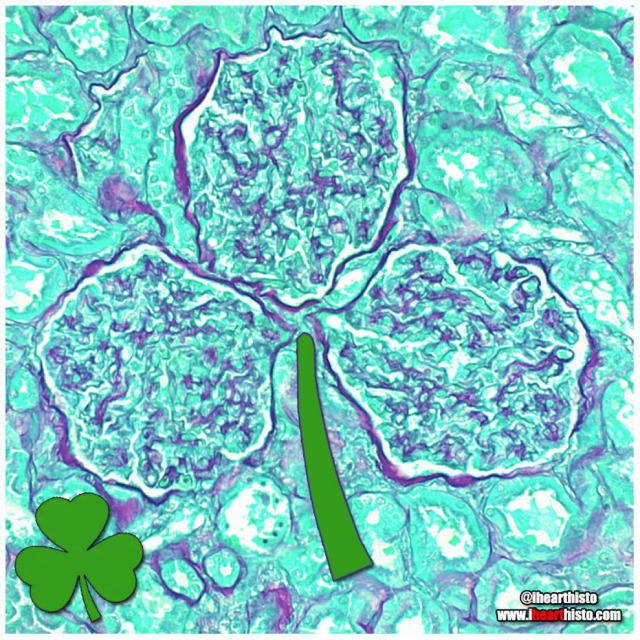
☘️Shamrock Gloms ☘️
For each petal on the shamrock,
This brings a wish your way.
Good health. Good luck. Happiness.
For today and every day.
Happy St. Patrick’s Day!
Three renal corpuscles (glomerulus + their surrounding Bowman’s capsules) floating in a sea of distal and proximal convoluted tubules within the cortex of the kidney.
These three small structures are knotted balls of capillaries (glomeruli) surrounded by a specialized epithelium (Bowman’s capsule) that is composed of cells called podocytes. These cells have tiny interlocking legs that form a small slit between them.
This structural organization is responsible for filtering your blood to produce a fluid that then travels within tubes continuous with the Bowman’s capsule called nephrons. In these nephrons the tubular fluid is modified by reabsorbing and secreting ions and conserving water to produce urine for excretion.
Kidney is looking absolutely fierce with the lovely @lavernecox. We’re totally not freaking out or anything…
Post link
The Diseases of Children, Vol. IV by Meinhard von Pfaundler, Arthur Schlossmann, Henry Shaw, and Edford La Fétra, 1908
Post link
Another Monolith Found Within Patient’s Left Kidney
http://gomerblog.com/wp-content/uploads/2020/12/Kidney-scaled.jpg
Salt Lake City, UT – After reports of a mysterious monolith appearing in the desert of southeastern Utah, followed by similar structures recently found in Romania and California, doctors at Salt Lake Regional medical center were surprised to encounter an identical monolith on one patient’s CT abdomen and pelvis. A middle-aged gentleman presenting with colicky […]
Read more on http://gomerblog.com/2020/12/another-monolith-found-within-patients-left-kidney/?utm_source=TR&utm_campaign=DIRECT
www.gomerblog.com
Post link
ただいま大阪のranbuさん @ranbushop で開催中の企画展 #標本の王国 の出品作品「腎臓解剖標本」。
5/15(日)まで開催していますので、ぜひ実物をご覧いただけると嬉しいです!
http://blog.ranbu-hp.com/?eid=1426
今回、私の作品とブローチは抽選販売となります。 作品のお申込みは店頭でもオンラインでもできます(ブローチのお申込みは店頭のみ)。
Instagramからのお申込みはranbuさんのオンラインショップアカウント @ranbu_onlineshop 経由でどうぞ。
各作品の詳細写真は私のポートフォリオにアップしてありますのでぜひご覧下さい!
(リンクは私のインスタのプロフィールからもどうぞ)
https://www.behance.net/hine
Anatomical Kidney soft sculpture for an exhibition, The Kingdom of Specimens, at ranbu in Japan.
#水島ひね #展覧会 #解剖アート #hinemizushima #オブジェ #フェルト #腎臓 #fiberart #標本 #企画展 #kidney #craft #anatomyart #ranbu #exhibition
https://www.instagram.com/p/CdCy9qyr7ys/?igshid=NGJjMDIxMWI=
Post link
This is Kendra Creek, she battled meningitis in 2010 and lost her limbs below the elbow and below the knee. As with many meningitis victims she also suffered severe kidney damage. She is currently in End Stage Renal Failure (ESRF). She is in desperate need of a kidney donation. If you or anyone you know would be interested please call Tracy Perry at 1-800-382-4602. I believe all donor costs are covered. Please reblog this post because even if you can’t part with one of your kidneys you may have a follower who can.
You only need one kidney to live, and Kendra’s are shot.
http://www.facebook.com/KendraNeedsAKidney
Post link
Polycystic kidney disease
A cystic genetic disorder of the kidneys (found with both dominant and recessive inheritance patterns). The cysts are numerous and are fluid-filled, resulting in massive enlargement of the kidneys. The disease can also damage the liver, pancreas and in rare cases, the heart and brain. It is one of the most common life-threatening genetic diseases, affecting an estimated 12.5 million people worldwide.
There is currently no cure so the goal of treatment is to:
- try to control blood pressure with medication
- relieve any symptoms of pain with painkillers
- treat any urinary tract infection with antibiotics
If kidney failure does occur, there are two possible treatments:
- dialysis – where a machine is used to replicate the functions of the kidney
- kidney transplant
Post link
Creatinine
- Creatinine is a waste product produced in muscles from the breakdown of a creatine.
- Creatine is part of the cycle that produces energy needed to contract muscles.
- Both creatine and creatinine are produced at a relatively constant rate.
- Almost all creatinine is excreted by the kidneys, so blood levels are a good measure of how well your kidneys are working.
If low:
- Low levels are not common and are not usually a cause for concern.
- As creatinine levels are related to the amount of muscle the person has, low levels may be a consequence of decreased muscle mass (such as in the elderly) but may also be occasionally found in advanced liver disease.
If high:
- Kidneys break down creatinine - if levels are high, they’re not working properly –>
- Damage to or swelling of blood vessels in the kidneys (glomerulonephritis) caused by, eg, infection or autoimmune diseases bacterial infection of the kidneys (pyelonephritis)
- Death of cells in the kidneys’ small tubes (acute tubular necrosis) caused, for example, by drugs or toxins
- Prostate disease, kidney stone, or other causes of urinary tract obstruction.
- Reduced blood flow to the kidney due to shock, dehydration, congestive heart failure, atherosclerosis, or complications of diabetes
Creatinine blood levels can also increase temporarily as a result of muscle injury and are generally slightly lower during pregnancy.
Urea
Urea is the final breakdown product of the amino acids found in proteins. Nitrogen in the form of ammonia is produced in the liver when protein is broken down. The nitrogen combines with other chemicals in the liver to form the waste product urea. Healthy kidneys remove more than 90% of the urea the body produces.
If Low:
- Low urea levels are not common and are not usually a cause for concern. They can be seen in severe liver disease or malnutrition but are not used to diagnose or monitor these conditions. Low urea levels are also seen in normal pregnancy.
· If high:
- High urea levels suggest poor kidney function.
- Acute or chronic kidney disease.
- However, there are many things besides kidney disease that can affect urea levels such as decreased blood flow to the kidneys as in congestive heart failure, shock, stress, recent heart attack or severe burns; bleeding from the gastrointestinal tract; conditions that cause obstruction of urine flow; or dehydration.
Albumin
Albumin is the most abundant protein in the blood. It keeps fluid from leaking out of blood vessels; nourishes tissues; and transports hormones, vitamins, drugs, enzymes, and ions like calcium throughout the body. Albumin is made in the liver and is extremely sensitive to liver damage.
If low:
- Low albumin concentrations in the blood can suggest liver disease. Liver enzyme tests are requested to help determine which type of liver disease.
- Diseases in which the kidneys cannot prevent albumin from leaking from the blood into the urine and being lost.
- Also seen in severe inflammation or shock.
- Conditions in which the body does not properly absorb and digest protein such as Crohn’s disease.
If high:
- High albumin concentrations in the blood usually reflect dehydration.
This is a very long list so click keep reading to read the rest!
Phosphate
In the body, phosphorus is combined with oxygen to form a variety of phosphates (PO4). Phosphates are vital for energy production, muscle and nerve function, and bone growth. They also play an important role as a buffer, helping to maintain the body’s acid-base balance.
If low: (hypophosphataemia)
- Hypercalcaemia (high levels of calcium), especially when due to high levels of parathyroid hormone (PTH)
- Overuse of diuretics (drugs that encourage urination)
- Severe burns
- Diabetic ketoacidosis after treatment
- Hypothyroidism
- Hypokalaemia (low levels of potassium)
- Chronic antacid use
- Rickets and osteomalacia (due to Vitamin D deficiencies)
- Increased production of insulin
If high: (hyperphosphataemia)
- Kidney failure
- Hypoparathyroidism (underactive parathyroid gland)
- Hypocalcaemia (abnormally low levels of calcium)
- Diabetic ketoacidosis when first seen
- Phosphate supplementation
Alkaline phosphatase
Alkaline phosphatase is an enzyme found in high levels in bone and liver. Smaller amounts of ALP are found in the placenta and in the intestines. Each of these makes different forms of ALP (isoenzymes).
If low
- Zinc deficiency. Magnesium deficiency. Anaemia. Poor nutrition.
- Hypophosphatasia (Metabolism disorder, in born). Hypothyroidism. Wilsons disease.
If High:
- Raised levels of ALP are usually due to a disorder of either the bone or liver.
- If other liver function tests are also raised, this usually indicates that the ALP is coming from the liver.
- However, if calcium and phosphate measurements are abnormal, this suggests that the ALP might be coming from bone.
- In some forms of liver disease, such as hepatitis, ALP is usually much less elevated than AST or ALT.
- However, when the bile ducts are blocked (for example by gallstones, scars from previous gallstones or surgery, or by a tumour), ALP and bilirubin may be increased much more than either AST or ALT.
- ALP can also be raised in bone diseases such as Paget’s disease (where bones become enlarged and deformed), in certain cancers that spread to bone or in vitamin D deficiency.
Calcium
99% of calcium is found in the bones, and most of the rest circulates in the blood. Roughly half of calcium is referred to as ‘free’ (or 'ionized’) and is active within the body; the remaining half, referred to as 'bound’ calcium, is attached to protein and other compounds and is inactive.
If low: (hypocalcaemia)
The most common cause of low total calcium is low protein levels, especially low albumin. When low protein is the problem, the 'free’ calcium level remains normal.
- Underactive parathyroid gland (hypoparathyroidism)
- Decreased dietary intake of calcium
- Decreased levels of vitamin D
- magnesium deficiency
- too much phosphate
- acute inflammation of the pancreas
- chronic kidney disease
- calcium ions becoming bound to protein (alkalosis)
- bone disease
- malnutrition, and alcoholism.
If high:(hypercalcaemia)
- Hyperparathyroidism (increase in parathyroid gland function) usually caused by a benign tumour on the parathyroid gland.
- Cancer when spread to the bones, which releases calcium into the blood, or when it causes a hormone similar to PTH to increase calcium levels.
- Hyperthyroidism, Sarcoidosis, Tuberculosis, Too much Vit D, Drugs that increase diuretics.
Potassium:
Abnormal concentration can alter the function of the nerves and muscles.
If low: (hypokalaemia)
- vomiting,
- diarrhoea, and insufficient potassium intake (rare).
In diabetes, potassium concentration may fall after insulin injection.
If high:
(hyperkalaemia)
- kidney disease
- Addison’s disease
- tissue injury
- infection
- diabetes
- excessive intravenous potassium intake (in patients on a drip)
Glucose:
If low: (hypoglycaemia)
- Adrenal disease (Addison’s disease)
- Alcohol/ drugs, such as: paracetamol and anabolic steroids
- Extensive liver disease
- Hypopituitarism
- Hypothyroidism
- Insulin overdose
- Insulinomas (insulin-producing pancreatic tumours)
If high:
High levels of glucose most frequently indicate diabetes, in fasting blood glucose test: <7mmol/L is indicative and in oral glucose test ites <11 mmol/L .
- Acromegaly
- Acute stress (response to trauma, heart attack, and stroke for instance)
- Long-term kidney disease
- Cushing’s syndrome
- Drugs, including: corticosteroids, tricyclic antidepressants, oestrogens (birth control pills and hormone replacement therapy [HRT]), lithium..
- Hyperthyroidism
- Pancreatic cancer. Pancreatitis
Triglyceride:
Most triglycerides are found in fat (adipose) tissue, but some circulate in the blood to provide fuel for muscles to work.
If low:
- Hyperthyroidism. Malnutrition. Certain medications and drugs can deplete fat, leading to low triglycerides.
If high: (e.g. at least 10-15 mmol/L) –> pancreatitis.
Parathyroid hormone:
Part of a ‘feedback loop’ that includes calcium, PTH, vitamin D, and to some extent phosphate and magnesium. PTH is secreted into the bloodstream in response to low blood calcium concentration.
- If both PTH and calcium results are normal, and appropriate relative to each other, then it is likely that the body’s calcium regulation system is functioning properly.
- Low –> conditions causing hypercalcaemia, or to an abnormality in PTH production causing hypoparathyroidism.
- High –> hyperparathyroidism, which is most frequently caused by a benign parathyroid tumour.
Calcium - PTH Relationship
- Calcium low and PTH high, then PTH working. Low calcium may be investigated.
- Calcium low and PTH normal or low –> hypoparathyroidism.
- Calcium high and PTH –> hyperparathyroidism.
- Calcium normal and PTH high –> vitamin D deficiency or chronic kidney disease.
Amylase
Released from the pancreas into the digestive tract to help digest starch. It is usually present in the blood in small quantities. When cells in the pancreas are injured or if the pancreatic duct is blocked (by a gallstone or rarely by a tumour) increased amounts of amylase find their way into the bloodstream.
If high:
- Pancreatitis which is a severe inflammation (often 5-10 times normal)
- Cancer of the pancreas, gallbladder disease, a perforated ulcer, obstruction of the intestinal tract, mumps or ectopic pregnancy.
- Increased blood amylase with normal or low urine amylase may indicate decreased kidney function or the presence of macroamylase.
Vancomycin is a powerful antibiotic that we use frequently in the hospital. However, of its main side effects is kidney damage. In patients who already have very bad kidney function, vancomycin can push them over the edge, into acute kidney injury (AKI) or end-stage renal failure (ESRD). For particularly sick patients, there may not be a good alternative to vancomycin, so the medicine team and I have to weigh the pros and cons carefully.
Post link


